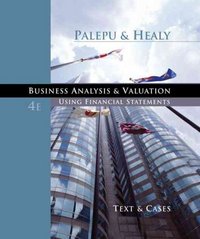I WILL UPVOTE! PLZ DON'T COPY FROM OTHER ANSWERS!! Please answer with detail and explain it to me in neat readable handwriting would be preferable.
SOLUTION STRATEGY
STEPS:
- Read the Question and identify the five values (four knowns and one unknown):
- Present value
- Interim payments (ordinary annuity/annuity due)
- Future value
- Discount rate/Interest rate / Required rate of return
- Period of investment
Use qualitative (words phrases) and quantitative information in the question to identify the four knowns and one unknown
- As you read the question also construct/draw the timeline.
Remember three defaults:
- All discount rates or interest rates or return rates are compounded unless specifically stated otherwise in the question.
- All compounding rates are of annual frequency unless specifically stated in the question
- All interim cash flows (during the investment period are at the end of the compounding period unless specifically stated to be at the beginning of the period
- Label the timeline
- Use your financial calculators for computation and solve to get the number for the fifth unknown variable
Remember: to check your calculator for the end or beginning of period cash flow settings as described in 1 (iii)

1. A flower distribution company, Perennial Blossoms wishes to buy a truck to expand its business. It could either buy or lease the truck. If the company buys the truck for $80,000, it can run it with routine maintenance & repairs for 5 years and sell it for $20,000. It will have to finance the truck purchase by paying 6% financing for 5 years, compounded monthly, from Auto Finance. The amortization of the loan financing has to be paid at the end of each month. Alternatively, the company can lease the truck with the lease payment due at the beginning of each month. Should the company buy or lease the truck? What other considerations should apply in the lease versus purchase decision of the company for the purchase of the truck? 1. There are three major personal financial decisions that a typical family will have to take in the normal course of events; a house purchase; retirement; and financing/supporting their children's education. Assume the following goals: a. Accumulating a down payment of $20,000 for a house in 4 years. b. Accumulating enough savings to finance a $40000 per year retirement in 35 years for the rest of their life. c. Creating a fund of $60,000 to support their child(ren)'s education in 20 years. Without assuming support from any government policy/program, calculate the monthly savings the couple needs to make, to realize these goals, if the annual rate of return on investments is historically 5% per year. How would your answer change if the annual rate of inflation is assumed to be 2% per annum and the family would like to keep the above goals in real terms by accounting for inflation? How will the monthly savings goal be impacted if the family also has to pay off a Canadian mortgage of $400,000 over 25 years at an assumed average APR of 4%. 1. A flower distribution company, Perennial Blossoms wishes to buy a truck to expand its business. It could either buy or lease the truck. If the company buys the truck for $80,000, it can run it with routine maintenance & repairs for 5 years and sell it for $20,000. It will have to finance the truck purchase by paying 6% financing for 5 years, compounded monthly, from Auto Finance. The amortization of the loan financing has to be paid at the end of each month. Alternatively, the company can lease the truck with the lease payment due at the beginning of each month. Should the company buy or lease the truck? What other considerations should apply in the lease versus purchase decision of the company for the purchase of the truck? 1. There are three major personal financial decisions that a typical family will have to take in the normal course of events; a house purchase; retirement; and financing/supporting their children's education. Assume the following goals: a. Accumulating a down payment of $20,000 for a house in 4 years. b. Accumulating enough savings to finance a $40000 per year retirement in 35 years for the rest of their life. c. Creating a fund of $60,000 to support their child(ren)'s education in 20 years. Without assuming support from any government policy/program, calculate the monthly savings the couple needs to make, to realize these goals, if the annual rate of return on investments is historically 5% per year. How would your answer change if the annual rate of inflation is assumed to be 2% per annum and the family would like to keep the above goals in real terms by accounting for inflation? How will the monthly savings goal be impacted if the family also has to pay off a Canadian mortgage of $400,000 over 25 years at an assumed average APR of 4%







